Fenichi
TNPer
An Essay on the Black Death and its Influence on Medieval Society
By Fenichi
By Fenichi
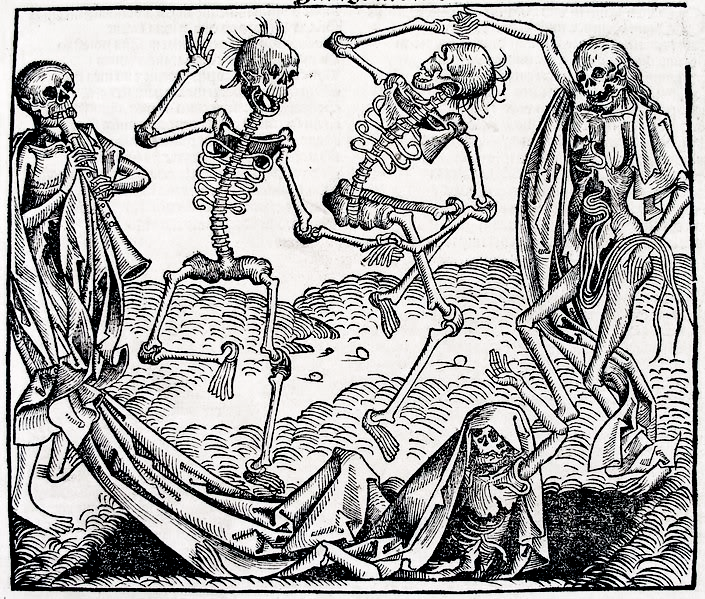
Diseases have been around since the first microorganisms have evolved. A disease is basically a condition that affects the body in a negative way and is caused by a bacteria or a virus. While today's society has a good understanding of what causes disease, in the middle ages people had no idea what would cause disease. Many would blame specific groups while others would say it was an act of God in an attempt to explain the nature of a disease. One event in particular that was caused by a disease is known no other than the Black Death. The Black Death itself killed about eighty to a hundred thousand people in Europe and the Middle East (Sherman 2006, 67). With such a large amount of death in such a short time, it is almost impossible for there not to be a change in society. To explore the effects of the Black Death, this essay will explain what the Black Death actually is and how it was perceived in medieval Europe, where the disease came from and how it travelled to Europe and explore its effects on society.
What was the Black Death?
With the technology society has today it is easy to understand and identify what kind of diseases can cause what kind of symptoms. However in Medieval Europe people didn't have access to that kind of technology and was depended on superstitions and radical ideas to explain events such as plagues. Sherman's The Power of Plagues describes that the public would use people separated from society were targeted as the main cause of the plague. These 'outsiders' included thieves, prostitutes and the Jews (Sherman 2006, 73). Jews lived separately from society due to cultural differences and because of this they could be easily targeted. Thieves stole from people while prostitutes would commit adultery, both of which went against the Christian commandments. Since the commandments were the basic rules for European society, both thieves and prostitutes could be considered outcasts since they didn't follow the commandments. In another perspective the Black Death was considered something that was sent by God to punish people who have committed sins such as adultery, usury and other actions (Dols 1977, 114).
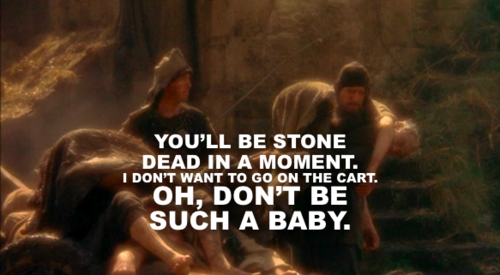
The Black Death is really a term to describe an event of a huge amount of death in such a short period of time. What cause of the Black Death is a small pathogen called Yersinia pestis. What made Y. pestis so deadly was that it caused three different plagues. The first plague and the most common first the bubonic plague, which usually is accompanied by symptoms such as necrosis and the nervous system becoming intoxicated. The second plague is the pneumonic plague which causes neurological difficulties as well as a coma. The last plague and the rarest out of the three is the septicaemic plague which results in Y. pestis overpopulating in the blood stream (Gottfried 1983, 8).
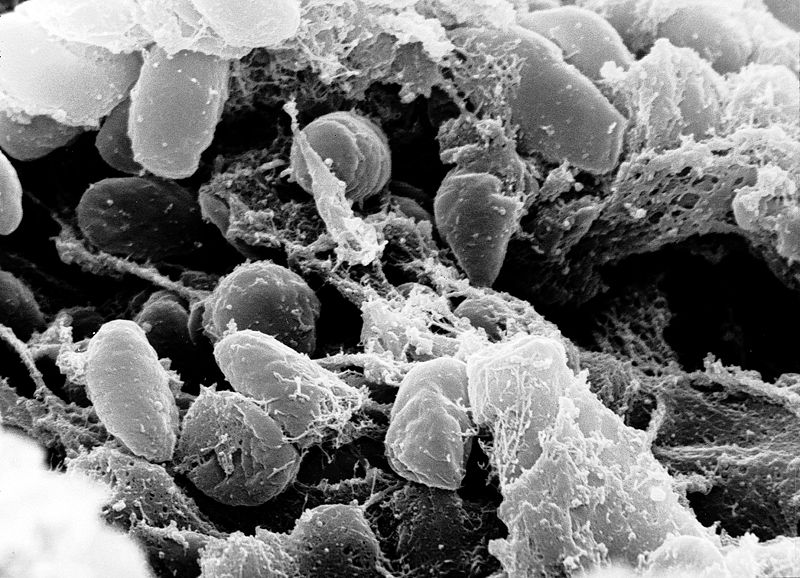
A picture of a Y. pestis culture.
Progress of the Black Death
The interesting thing about Y. pestis is that it did not originate from Europe. The pathogen originated particularly from Central Asia and migrated to the Middle East. Y. pestis originally resided in fleas. Because the disease travelled via fleas Y. pestis could be spread to different animals, including rats and humans. Trade routes from Mongolia and Northern China were ways for people to safely and quickly transport goods over great distances.
Fleas would attach themselves onto humans and Y. pestis would be transferred from the flea to the human (Borsch 2005, 8). Trade routes to Cairo and Constantinople in the Byzantine Empire were important in the spread of Y. Pestis.

The closest thing I could find to Dols' map
A map in Dols' The Black Death in the Middle East shows which routes Y. pestis took. Both Constantinople and Cairo were important for allowing the disease to travel. The map showed Cairo being a centre for trade, which would allow the disease to spread through Africa. Constantinople was equally important since Y. pestis could travel to Europe by residing in rats that were carried on ships. As mentioned before fleas would also attach themselves to rats like they would for humans. Once Y. pestis is transferred to the rats they can spread disease by touching and eating goods that the ships are carrying. This allows Y. pestis to spread across the European continent.
Effect on European Society
For a majority of the eleventh to the late thirteenth century Europe in general was in a Golden Age. A Golden Age is a period of massive and unbroken economic growth (Ziegler 1991, 19). As the economy grows the population is also able to grow. Villages grew bigger and were identified as either towns or cities because they had more money and more people, and since Europe still had land that could be used to produce food the population could maintain itself and grow.
Europeans before the plague.
In contrast, as the population grew so did the demand for products. By the mid thirteenth century events such a drastic change in climate played a roll in the demand for products. As the temperature decreased in Europe farmers found it more difficult to produce food. Since the population was growing and the demand for food grew Europe slowly went into a recession as the production of food could not meet with the demand of the growing population. The population of Ypres died of starvation and cannibalism became common (Ziegler 1991, 21)
So when Y. Pestis arrived in Europe and caused the Black Death in the fourteenth century the European population found itself unprepared for the epidemic. By 1351 it was estimated that around 23 million people died, which was about thirty percent of the European population. Such a large population lose occurring caused changes in behaviour and psychology. Many believed the Black Death was a way for God to punish heretics. This idea originated from the Book of Revelations from the bible, which discussed how God would judge the population (Gottfried 1983, 77) Since the bible was a popular source of information at the time many considered it the word of God and the Black Death was his way of punishing the human race. Since people didn't know what they were punished for they tried to explain what their 'crime' was. This caused tension between classes. One explanation for the plague was the greed of kings and that knight showed no reverence. Others accused it was because of the drunkenness of the peasants. There was also an accusation against the church whether or not if its sense of morality was decreasing (Ziegler 1991, 24).
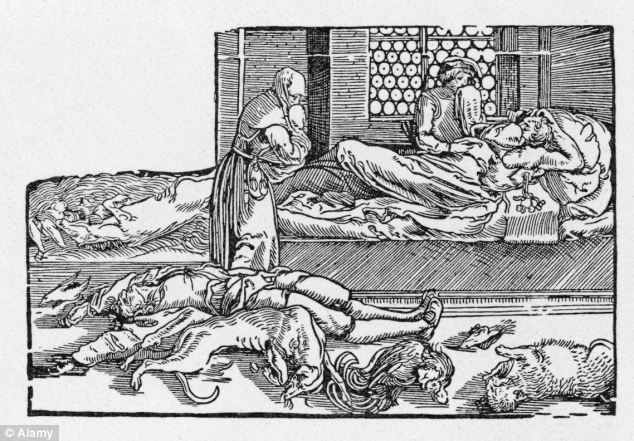
Since there are these accusations as well as other factors the social structure of Medieval Europe began to change. For an example, papal authority began to decline. This came from the idea that the church could not stop the progress of the plague. Even priests would die to the plague, which reinforced this idea (Sherman 2006, 70). While confidence in the church did diminish, the Black Death also lead to a greater consciousness for religion. Different orders such as the Flagellant Movement challenged church authority to practice their own beliefs. While the order did not last it positively affected society by providing spiritual revival and raising hope (Sherman 2006, 76).
Along with church authority the feudal structure began to breakdown. The feudal system consisted of a landlord that owned serfs that would farm land. As the Black Death swept across Europe more and more people died, which meant less workforce which in turn meant less money. In order for the land to be farmed the lord of the land either has to pay for farmers or rent out the land (Sherman 2006, 79).
As the feudal structure broke down and church authority weakening, the lower classes have room to gain more influence. In England in 1381 there was a rebellion consisting of peasants who were responding to the increase in a series of taxes. While the revolt was unsuccessful peasants still abandoned the land they farmed. Because of this lords were required to meet the serfs demand in order to keep the serfs working on the land (Borsch 2005, 61). Trades such as trading and money lending became more important, and guilds were able to strengthen (Sherman 2006, 79).
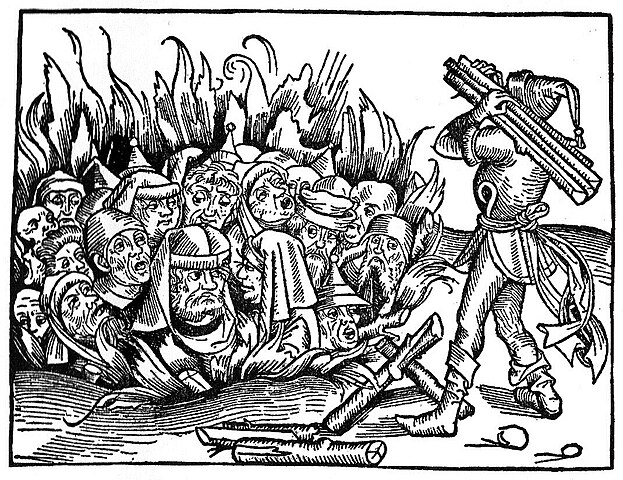
Jews were considered a main cause of the plague due to their cultural differences and isolated communities.
The Black Plague also affected to growth of population. Not only did it kill off most of the population, but it also caused people to resort to isolating cities. While people didn't fully understand what caused the Black Death they did realize that it was caused by a plague. In order to prevent the spread of the plague people in cities were forbidden to leave and other cities would restrict access of people coming into the city. At the same time it encourage people with special trades to immigrate. An example is Poland under King Casimir. Casimir invited a large population of Jews because they were discriminated everywhere else and he needed the expertise of the Jews, who were mainly moneylenders, bankers and merchants (Sherman 2006, 74). Since bankers as well as other professions were of a growing importance it would be logical to hold a large population consisting of those trades.
The Black Death is truly an interesting event. Originating in central Asia it travelled along trade routes on fleas and rats. When it comes in contact with these animals it also comes in contact with humans. As the Black Death finds itself in Europe it causes a drastic change and as a result makes itself a sudden disturbance in society. Because of this disturbance people found the need to adapt. This essay looked at how people viewed the Black Death, what it actually was, the decline in feudal and church power and the growing power of guilds and other trades, and how they tried to deal with population control. There are plenty of ways how the Black Death affected European society and how it adapted to the epidemic, and as a result it effects history as a whole. With that being said not only did it affect European society but also affected society around the world as a whole.
BIBLIOGRAPHY
Irwin W. Sherman. The Power of Plagues. California: ASM Press, 2006.
Michael W. Dols. The Black Death in the Middle East. New Jersey: Princeton University Press, 1977.
Philip Ziegler. The Black Death. Gloucestershire: Alan Sutton, 1991.
Stuart J. Borsch. The Black Death in Egypt and England. Austin: University of Texas Press, 2005.
Robert S. Gootfried. The Black Death: Natural and Human Disaster in Medieval Europe. New York: The Free Press, 2010.

